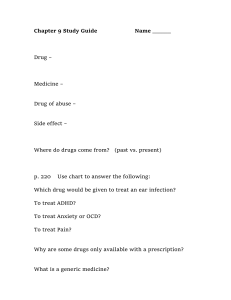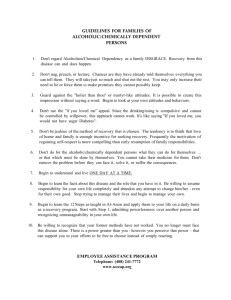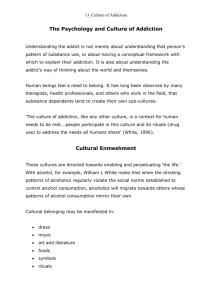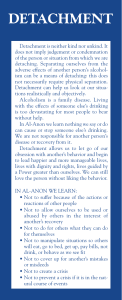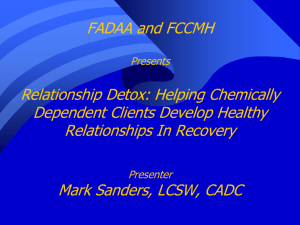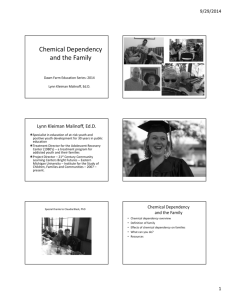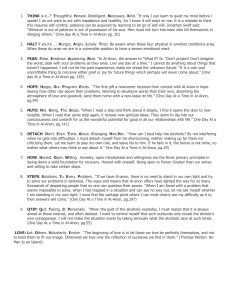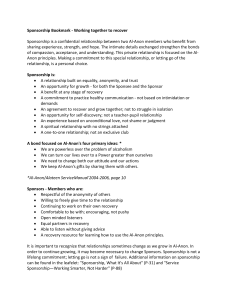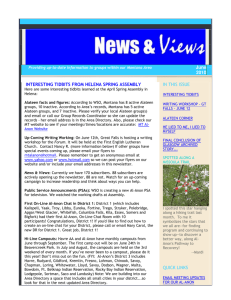An Original Family Disease Model: Is It Still Effective?
advertisement
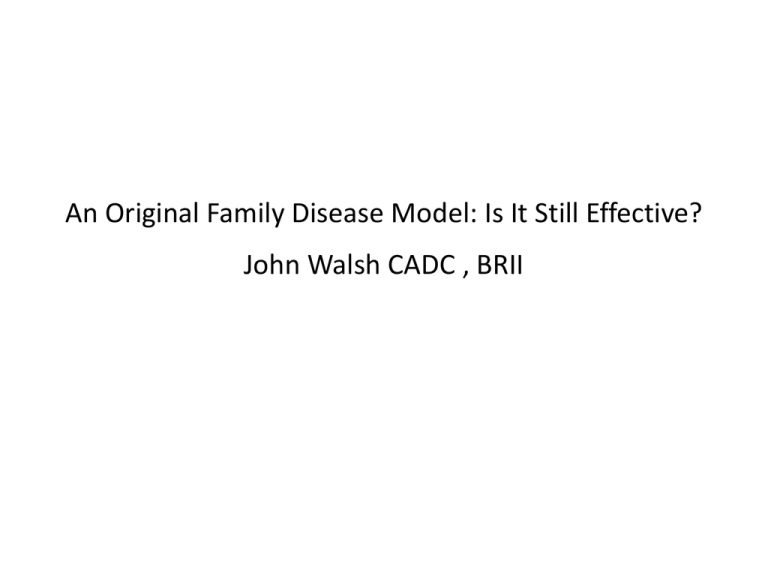
An Original Family Disease Model: Is It Still Effective? John Walsh CADC , BRII Family Support Groups Family support groups in existence for over 180 years Part of temperance movement of 19th century Martha Washington Society for adults Junior auxiliaries Al-Anon 1951 Alateen 1957 Professional Family Illness Models Joan Jackson-1954,The Adjustment of the Family to the Crisis of Alcoholism Dorothy Petraitis-Family Systems Therapist. Behaviors intersect with emotions when addiction present. Barbara Campbell-The Concerned Persons Project 1975 Claudia Black-1982 It Will Never Happen To Me Janet Woititz- Adult Children of Alcoholics Sharon Wegscheider-Cruse – Another Chance 1985 • • • • • • The Chemically Dependent The Chief Enabler The Hero The Scapegoat The Lost Child The Mascot Subsequent Significant Works Robert Ackerman Ph.D.- Intervening Variables for Effect. All models more dynamic than rigid because of circumstances. Melody Beattie- Codependent No More. John Bradshaw- Portrayal of harmful shame as a bonding agent in the CD family Dr. Stephanie Brown- Her works forced the realization that families can’t rapidly regain health following the initiation of addiction recovery Variations of These Models Caused by Drug Addiction and Younger Affected Alcoholics/Addicts • Some drug addiction causes crashing to bottom versus sliding to bottom seen in prior models. • Family adaption is therefore different as a result of some of the following adolescent family characteristics • 1.Use is more hidden because of age and legal ramifications. • 2.Higher potency per ingestion , quicker pathways to brain ,therefore significantly shorter time frame for maximum physiological response. • 3.Discovery of problem creates instant turmoil and chaos in family. • 4.Responses more dramatized and sometimes traumatic. Young Adult or Adult Still Dependent on Family. Ages 19-60 • No more legal necessity to “take care of”. • MORE enabling from parents , grandparents , ex-spouses , children , and others. • More abuse of parents and grandparents( stealing , threatening behavior verbally, physically and emotionally. • Explosion and cost of current drug usage. • Siblings and others angry and isolated from parents. • Parents and grandparents generally at odds over what to do. • Increased shame, guilt, embarrassment, fear, and humiliation. Treatment’s Response to the Debilitating Effects of Family Illness • • • • • • • • • Open AA meetings where family members could attend Al-Anon meetings(institutional style) Al-Anon meetings(open to community) Alateen meetings Visitation tied to attendance at facility Al-anon Family week Family program-3 days IOP family lecture or day or night. Traditional Outpatient- some family members find treatment for their specific issues. My Response to Treatment Response • WOEFULLY INADEQUATE My Challenge to Us • Never do a presentation without mentioning family • Never do an assessment, intake ,admission, or consult without attempting to have family involvement • 50 to 85% of the alcoholics/addicts you treat came from a chemically dependent family themselves, think about what this means • If you can’t Treat the family member, send them to somebody that can and will • Make yourself part of the new paradigm of treating family
